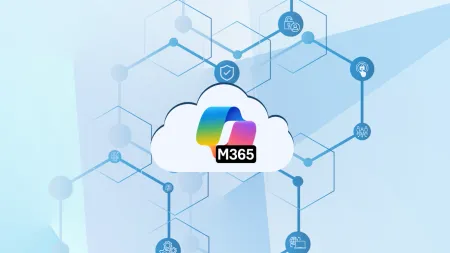Restrictions When Syncing SharePoint Libraries with OneDrive
What are the restrictions when syncing SharePoint libraries through OneDrive for BusinessIt is possible to sync OneDrive for Business to Sha...

What are the restrictions when syncing SharePoint libraries through OneDrive for Business?
It is possible to sync OneDrive for Business to SharePoint libraries to access your files through File Explorer. In order to do this you need to have the OneDrive for Business sync app installed which comes with Office 2013 or Office 365. You can also download the standalone app by clicking here. The sync relationship allows you to access your files whether you are offline or online, as they are synced to your local computer.
How many items can you sync?
Your OneDrive for Business library allows you to sync up to 20,000 items including folders and files. If you have more than one OneDrive personal site you can sync up to 20,000 items for each of those as well. For the SharePoint library you can only sync up to 5,000 items including folders and files. These libraries are the ones that you can find on multiple SharePoint sites to include team and community sites. In addition, you can also sync up multiple SharePoint libraries with files up to 2GB.
Character restrictions
The following applies to folders and files that you add to a synced library folder you wish to upload to SharePoint: File names are limited to 128 characters in SharePoint Server 2013 File names can have up to 256 characters in SharePoint Online You can have up to 250 characters for folder names You can have combinations of names and file names up to 250 characters Invalid characters for SharePoint Server 2013 include: :
Invalid characters for SharePoint Server 2013 include:
: / ? * “ | # { } % ~ & < >Files or folders that begin with a (.) or (~) are not supported.
Invalid characters for SharePoint Online include:
% < > : | / ? “ * #Files or folders that begin with a (~) character are not supported
character are not supported.
More about unsupported folder names
A folder called “forms” is not supported at a root level for any list or library when syncing OneDrive for Business with SharePoint. Forms is a hidden default folder which stores templates and forms for the library so you cannot use that name for a folder as it is already taken. You can, however, add a number or supported character if you need to create a folder named “forms”. For example, you can create a folder named “Forms2015”, “Accounting Forms”, “Forms for Accounting”, etc. Folders that contain the string _vti_ are also not supported as they are reserved by SharePoint. If you choose the following list of folder names to sync SharePoint Online and OneDrive for Business it is possible they will not appear on the SharePoint Online or OneDrive for Business webpage. With this restriction in place you might not be able to add files or folders with these characters when in OneDrive for Business folders. If you’re creating these folders or files for areas external to OneDrive for Business and drag them into a OneDrive for Business folder, they will sync but the files will not appear on the page. *_Dateien *_private *_soubory *_archivos *_files: *_elemei *_failid *_bestanden *_file *_ficheiros *_datoteke *_arquivos *_fitxers *_pliki *_tiedostot *_dosyalar *_fails *_bylos *_fajlovi *_fichiers *_fitxategiak
Using GUID strings as your file names
You can use the GUID string structure in SharePoint Oline however the following structure is not supported for names in SharePoint 2013: ’{’ + 7 hexadecimal + ’-’ + 4 hexadecimal + ’-’ + 4 hexadecimal + ’-’ + 4 hexadecimal + ’-’ + 12 hexadecimal +’}’ An example of a GUID string that resembles that restriction is: {8b6634a7-26b7-40a2-a48e-6f967d89c29e}
Invalid file extensions
Another restriction when syncing OneDrive for Business and SharePoint is files that have a *.ds_store and *.tmp extension. These extensions will not sync and you also cannot upload files such as thumbs.db, ehthumbs.db, or desktop.ini. These file types will be blocked and you also cannot sync SharePoint file types which are blocked. If your company uses SharePoint Server, your blocked files list might vary depending on what the administrator has established. If you are using SharePoint Online, the default blocked files list cannot be changed. The following site lists the default blocked files: File types that cannot be added to a list or library.
Currently opened files cannot be synced
Similar to Windows Explorer where you cannot rename or delete files currently opened, you cannot sync opened files with OneDrive for business. You must first save and close any open files in order to sync them with SharePoint.
Lookup column threshold issue
Neither the OneDrive for Business or SharePoint Online libraries can exceed the lookup column threshold. If you receive a “we couldn’t sync this library” issue you should reduce the number of lookup columns in the SharePoint Online list and then try to sync the library again. If you still get the error keep doing this until your error is gone. In the error window click on Technical Details and you’ll receive a message stating that the query could not be completed due to the number of lookup columns which exceeds the threshold.
OneNote notebooks cannot be synced
Since OneNote has its own sync methods you cannot sync them with OneDrive for Business. You can however uploade OneNote notebooks into a SharePoint webpage. If you try to sync a notebook with a local folder that currently syncs with SharePoint it will not sync up and you may encounter sync errors with that folder so it is best to keep OneNote notebooks separate from your synced folders.
Use the “Fix it” tool to help you rename folders and files
In order to get properly synchronization you might have to rename a large number of files if they contain unsupported characters. If this is the case the Fix it tool will help you by automatically renaming folders and files to eliminate the unsupported characters. This tool is also helpful in creating a report of the changes to any files that were in violation of the file naming restrictions mentioned above.
Additional guidance
While this may sound like a laundry list of restrictions and issues for syncing SharePoint libraries through OneDrive for Business it is not too far off from typical file and folder issues associated with many other Microsoft products. If you currently follow the guidance for character restrictions and file naming as listed above you will find it easy to synchronize OneDrive for Business with SharePoint Online and SharePoint 2013.





